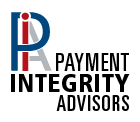
Our reviews are conducted with minimal disruption to your team. Internal resources are
needed from IT, Supply Chain and Accounts Payable as follows:
- IT – Data files are needed prior to beginning work, typically 4-8 hours to extract
- Supply Chain – Due diligence meeting (understanding internal processes and
preferred approach to accessing documents during review), typically 1-2 hours prior
to review and occasional question/guidance during the review - Accounts Payable – Typically one hour per week (understanding processes, guidance
and processing of claims)
Our P2P reviews typically focus on the last two years of transaction activity. If an issue is
identified and our client supports reconciliation beyond the two-year period – we will
work with the supplier to pursue on your behalf. These are normally reserved for items
of substance.
The typical length of an initial review – focusing on two years of purchase activity –
is twelve to sixteen weeks (upon receipt of data sets needed).
There 6-8 data sets and access to hard copy
documents needed. Included are:
- Invoice EDI
- Paid History
- Vendor & Item Masters
- Purchase Order (header & detail)
- Receiving (line item)
- Price Changes
- Cash Receipts
- Returns activity
- Contracts
Reviews are self-funded, contingency fee driven and based entirely upon collections.
There are no costs to client for future savings/go forward benefit.
Rates vary and are dependent upon the review scope, along with the availability of data.
The success of any review is dependent upon different criteria – including data availability
(EDI) – along with contract, pricing and promotional documents or files. Engagements
considered more manual in nature typically possess a higher contingency rate
(than those with a higher level and quality of transactional activity data).
Supplier relationships are valued and efforts to inquire or resolve items identified should
be handled accordingly. Suppliers understand that errors and oversights occur and –
if approached in a professional manner – are willing to research and reconcile open issues.
Occasionally there may be hesitation on the part of the supplier to research items beyond
a particular time period deemed appropriate. In those cases, the best approach is for the
buyer make a decision on if they would like to pursue the issue further.
All items in question are documented and forwarded to suppliers for validation. Our team
works with suppliers to ensure that the claim is accurate and they are in agreement the funds
are due. A credit memo, or written authorization agreeing the funds may be processed
for deduction completes the recovery process. Claim copy, along with the credit memo
(or written approval) is forwarded to our client contact for processing.
While identifying errors or oversights may create some sensitivity internally, there are
many positive considerations that outweigh those feelings. Even for “best in class” P2P
operations, it’s virtually impossible to not have funds slip through the cracks. The awareness
of problem suppliers, system and/or process shortcomings create internal value and position
team members to learn and improve.
During the due diligence phase, we will be spending a day or two each visit on site.
This helps us understand internal processes and enables access to documents needed
build our audit trail. Once that part is complete, we will typically visit every other week.
Client data is protected “end-to-end” and is encrypted (256 bit AES) during transmission
and at rest. Storage is cloud based, Tier lll SSAE 16 compliant.
Data acquisition and manipulation is conducted within Egnyte – an industry leading file
sharing and cloud storage provider – in partnership with Microsoft Azure.
This arrangement provides PIA with a technology platform possessing world class security
– meeting HIPPA standards – and clients with peace of mind.
Both companies service levels and client needs change over time. Secondary reviews
allow clients to verify the primary provider’s results are thorough and meet expectations.
It’s simply human nature for different providers to have a different vantage point and some
firms use teams that possess different skillsets and experience levels. Clients that have
proactively addressed processes shortcomings and strengthened internal controls – ultimately
reduce the provider’s incentive over time (due to lower recoveries). This type of environment
may influence some firms to adjust staffing levels and focus on certain areas to reduce costs.
